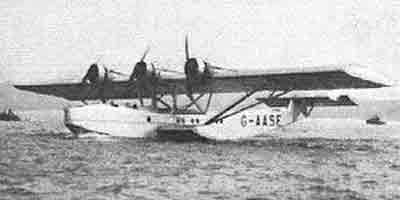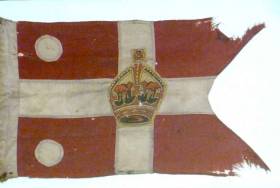Displaying items by tag: Guinness Flying Yacht
The Guinness Flying Yacht on Lough Corrib
In the Committee Room of Galway Bay Sailing Cub there hangs a neatly-framed flag writes W M Nixon. But the flag itself is no longer neat – it has been battered by the winds. This flag has been about, and then some. But how did Galway Bay SC come by it, and what is it?
Apparently they acquired it from their first Commodore, who was one of an old local landed family, the Waithmanns. But as the flag is the burgee of the Rear Commodore of the Royal St George Yacht Club, he in turn can only have been gifted it, as no Waithmann was ever Rear Commodore of the Royal St George YC.
So what Rear Commodore of the Royal St George had any links with Galway? Step forward the Hon. Arthur Ernest Guinness (1876-1949). He was Rear Commodore Royal St George YC from 1821 to 1939. His main club was actually the Royal Yacht Squadron. But as his family also happened to include Ashford Castle on Lough Corrib in their very considerable property portfolio, he kept a steam yacht on the lake and was a member of the old Royal Galway Yacht Club as well.
In fact, he’d a personal fleet of yachts, including the square rigger Fantome which, properly speaking, was a ship. And one of the odder vessels in his ownership was a flying yacht. You soon become accustomed to the unusual in considering the A E Guinness flotilla. But a flying yacht? Yes indeed.
It seems that in the 1920s the Danish government was experimenting with a substantial flying boat designed and built R J Mitchell, who later designed the Spitfire. The Danes wanted a flying and floating machine capable of carrying large torpedoes, and they called Mitchell’s 1927 prototype Nanok, which means polar bear in Inuit. But while Nanok without the torpedoes flew well, when they were suspended from the machine ready for attack, their presence so distorted the flying characteristics that Nanok became a menace.
So the whole project was called off. But Mitchell was left with this rather fine flying boat with nothing to do. Then Ernest Guinness got to hear of it, and he had her converted with yacht-style accommodation for 12. Yet even with all the luxuries and fripperies, the machine – now re-named Solent and reputedly registered as a yacht, though we’ve yet to find evidence of this – gave Ernest Guinness and his chums a very handy way of getting to Ashford from the south of England.
They would take off from the Solent in Solent, and fly to what most of them still thought of as Kingstown Harbour. Then after lunch in the Royal St George Yacht Club, they’d take off again and land at Lough Corrib off Lisloughry, up beside Ashford Castle. This was all became so agreeable that the word is that the comings and goings of the flying yacht Solent on the Corrib occurred so often that it was scarcely considered worthy of local mention.
 Ernest Guinness’s flying yacht Solent at Lisloughry on Lough Corrib
Ernest Guinness’s flying yacht Solent at Lisloughry on Lough Corrib
But now, what we’re left with today is the intriguing thought that the battered burgee up on the wall in Galway Bay Sailing Club once flutterd proudly atop a moored flying yacht on Lough Corrib. Or are purists going to insist that the special burgee could only have been flown if the owner was actually on board?




























































